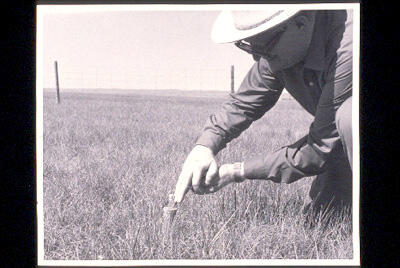
Zona do título e menção de responsabilidade
Título próprio
Matador International Biological Program Research Station - R.T. Coupland
Designação geral do material
- Material gráfico
Título paralelo
Outra informação do título
Título e menções de responsabilidade
Notas ao título
Nível de descrição
Item
Entidade detentora
Código de referência
Zona de edição
Menção de edição
Menção de responsabilidade da edição
Zona de detalhes específicos de materiais
Menção da escala (cartográfica)
Menção da projecção (cartográfica)
Menção das coordenadas (cartográfico)
Menção da escala (arquitectura)
Autoridade emissora e denominação (filatélica)
Zona de datas de criação
Data(s)
-
1969 (Produção)
Zona de descrição física
Descrição física
1 slide : b&w ; 3 x 2 cm
Zona dos editores das publicações
Título próprio do recurso continuado
Títulos paralelos das publicações do editor
Outra informação do título das publicações do editor
Menção de responsabilidade relativa ao editor do recurso contínuo
Numeração das publicações do editor
Nota sobre as publicações do editor
Zona da descrição do arquivo
Nome do produtor
História custodial
Âmbito e conteúdo
R.T. Coupland, Director of Matador Project (1966-1976) and professor of plant ecology, examines grain in a field.
Bio/Historical Note: From 1967 to 1972, plant ecologists at the University of Saskatchewan participated in the International Biological Program. As part of this worldwide study of agricultural productivity, ecologists established the Matador field station for grassland research carried out by scientists from thirty-four countries. The field station was located near Kyle, thirty miles north of Swift Current, in an area of natural grassland that was potentially the best wheat growing soil in the brown soil zone of Saskatchewan. The land (three square miles) was originally leased for 21 years from the Government of Saskatchewan; the lease (for $1/year) has since been renewed and currently expires in 2009. The Matador Project involved the study of the total grasslands ecosystem, including the interaction of animals, plants, microorganisms, soils and the atmosphere. Robert T. Coupland, Head of the Department of Plant Ecology, served as Director of the Matador Project.
Zona das notas
Condição física
Fonte imediata de aquisição
Organização
Idioma do material
Script do material
Localização de originais
Disponibilidade de outros formatos
Restrições de acesso
Termos que regulam o uso, reprodução e publicação
Copyright: University of Saskatchewan
Other terms: Researchers are responsible for obtaining permission regarding reproductions.
Instrumentos de descrição
Materiais associados
Ingressos adicionais
Nota geral
From 1967 to 1972, plant ecologists at the University of Saskatchewan participated in the International Biological Program. As part of this worldwide study of agricultural productivity, ecologists established the Matador field station for grassland research carried out by scientists from thirty-four countries. The field station was located near Kyle, thirty miles north of Swift Current, in an area of natural grassland that was potentially the best wheat growing soil in the brown soil zone of Saskatchewan.
The land (three square miles) was originally leased for 21 years from the Government of Saskatchewan; the lease (for $1/year) has since been renewed and currently expires in 2009. The Matador Project involved the study of the total grasslands ecosystem, including the interaction of animals, plants, microorganisms, soils and the atmosphere. Robert T. Coupland, Head of the Department of Plant Ecology, served as Director of the Matador Project.

